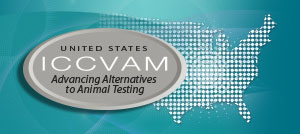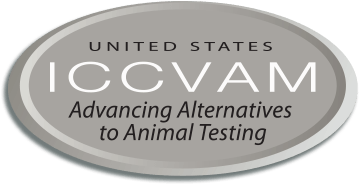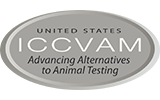The 2018 ICCVAM Strategic Roadmap identified the definition of agency information needs as a key step in its implementation. ICCVAM member agencies are collaborating both within ICCVAM workgroups and independently to define agency information needs and make those needs known to stakeholders. Areas considered in 2022 and 2023 included acute toxicity, ecotoxicity, and PFAS toxicity.
Assessments of Agency Needs and Practices
Review of current ecotoxicity testing needs among selected U.S. federal agencies
U.S. regulatory and research agencies use ecotoxicity test data to assess the hazards and risks associated with substances that may be released into the environment, including but not limited to industrial chemicals, pharmaceuticals, pesticides, food additives, and cosmetics. These data are used to conduct hazard assessments and evaluate potential risks to non-target animals and plants. To identify opportunities for regulatory uses of non-animal replacements for ecotoxicity tests, the needs and uses for these types of test data must first be clarified. The ICCVAM Ecotoxicology Workgroup prepared a review (Ceger et al. 2022) that identifies the ecotoxicity test data relied upon by U.S. federal agencies. The review describes the standards, test guidelines, guidance documents, and endpoints that are used to address each of the responding agencies’ regulatory and research needs regarding ecotoxicity testing in the context of their application to decision-making. This information will be useful for coordinating efforts to develop and implement alternative test methods to reduce, refine, or replace animal use in chemical safety evaluations.
Prioritization of application of alternatives for acute fish toxicity testing
Regulatory agencies use data from the in vivo fish acute toxicity test to assess potential risk of substances to aquatic vertebrates. The ICCVAM Ecotoxicology Workgroup is preparing a review, to be submitted for publication in 2024, to help guide prioritizing development and application of alternatives to the fish acute toxicity test, focusing on regulatory use of fish acute toxicity data and alternatives. The Ecotoxicology Workgroup asked each agency:
- What does your agency do with acute fish toxicity data?
- What is your flexibility to use new approach methodologies (NAMs)?
- What should the data submitter know about your agency’s process?
- Are there legal or regulatory impediments to the adoption of NAMs? For example, are live animal data specifically called for in your agency’s regulations?
Responses were included in the draft manuscript, which will also address performance of two alternative test methods described in OECD test guidelines, the fish embryo acute toxicity test and the RTgill-W1 cell line assay.
Federal agency needs and requirements for nanomaterials toxicity testing
Engineered nanomaterials (ENMs) come in a wide array of shapes, sizes, surface coatings, and compositions, and often possess novel or enhanced properties compared to larger sized particles of the same elemental composition. To ensure the safe commercialization of products containing ENMs, it is important to thoroughly understand their potential risks. Given that ENMs can be created in an almost infinite number of variations, it is not feasible to conduct in vivo testing on each type of ENM. Instead, new approach methodologies (NAMs) such as in vitro or in chemico test methods may be needed, given their capacity for high-throughput testing, lower cost, and ability to provide information on toxicological mechanisms. However, the different behaviors of ENMs compared to dissolved chemicals may challenge safety testing of these substances using NAMs. The ICCVAM Nanomaterials Workgroup queried ICCVAM member agencies about what types of ENMs are of agency interest and whether there is agency-specific guidance for ENMs toxicity testing (Petersen et al. 2022). To support the ability of NAMs to provide robust results in ENM testing, two key issues in the usage of NAMs, namely dosimetry and interference/bias controls, are thoroughly discussed.
ICCVAM PFAS Workgroup
PFAS are organofluorine chemicals manufactured and used for decades in products and applications such as firefighting foams, food packaging, and stain- and water-resistant fabrics and carpeting. PFAS have very specific properties that make them resistant to oil, water, and high temperatures. They are highly persistent and bioaccumulate in the environment, biota, and humans. While there is great national and international pressure to understand PFAS hazard, doing so effectively and efficiently presents many challenges. There is no consensus definition of PFAS, and their large variety of chemical structures, physiochemical characteristics, and toxicological properties makes PFAS hazard prediction extremely challenging.
ICCVAM established a workgroup in 2023 to provide expertise in identifying and evaluating NAMs to predict PFAS toxicity. The group’s charges include:
- Evaluate current PFAS definitions and groupings.
- Assess the utility of new approach methodologies (NAMs) currently being used by national and international regulatory agencies for testing and risk assessment of specific PFAS based on case examples of successful application of certain NAMs.
- Identify research challenges and data gaps for the use of specific NAMs for testing and risk assessment of different PFAS.
- Identify NAMs that have not been used for PFAS and explore opportunities for expanding their application for their testing and risk assessment.
The planned activities of the group were discussed at the September 2023 SACATM meeting. The workgroup is currently drafting a white paper that will propose definitions and groupings of PFAS, outline current applications of NAMs for PFAS hazard identification, and identify challenges and data gaps that need to be addressed for further applications of NAMs. It will then convene a workshop to address issues identified in the white paper, with findings from the workshop presented in a published manuscript.
Retrospective analysis of dog study data from food and color additive petitions
The use of animals in toxicity testing and in scientific research more broadly has been a subject of increasing discussion in recent years. Objections to the use of dogs for this purpose focus both on ethical and humanitarian grounds and practical concerns, which note both the expense and time needed for these studies and the value and relevance of dog studies in human risk assessment. To explore alternatives to animal testing for food and color additives, scientists within the FDA Center for Food Safety and Applied Nutrition analyzed a sample of food additive and color additive petitions submitted to FDA (Flannery et al. 2023). The analysis indicated that most safety evaluations of food and color additives did not rely upon dog studies to set an acceptable daily intake, although dog study data were used in making safety decisions in roughly one-third of petitions. Future research should include the development and use of qualified alternative studies to replace the use of animal testing for food and color additive safety assessment while ensuring human safety.
Review of international regulatory uses of acute systemic toxicity data and integration of NAMs
Chemical regulatory authorities around the world require systemic toxicity data from acute exposures via the oral, dermal, and inhalation routes for human health risk assessment. To identify opportunities for regulatory uses of non-animal replacements for these tests, NICEATM scientists and collaborators reviewed acute systemic toxicity testing requirements for jurisdictions that participate in the International Cooperation on Alternative Test Methods (ICATM): Brazil, Canada, China, the European Union, Japan, South Korea, Taiwan, and the United States (Strickland et al. 2023). The chemical sectors included in review of each jurisdiction were cosmetics, consumer products, industrial chemicals, pharmaceuticals, medical devices, and pesticides. The study demonstrated acute systemic toxicity data were most often required for hazard assessment, classification, and labeling, and to a lesser extent quantitative risk assessment. Where animal methods were required, animal reduction methods were typically recommended. For many jurisdictions and chemical sectors, non-animal alternatives are not accepted, but several jurisdictions provide guidance to support the use of test waivers to reduce animal use for specific applications. An understanding of international regulatory requirements for acute systemic toxicity testing will inform ICATM’s strategy for the development, acceptance, and implementation of non-animal alternatives to assess the health hazards and risks associated with acute toxicity.



